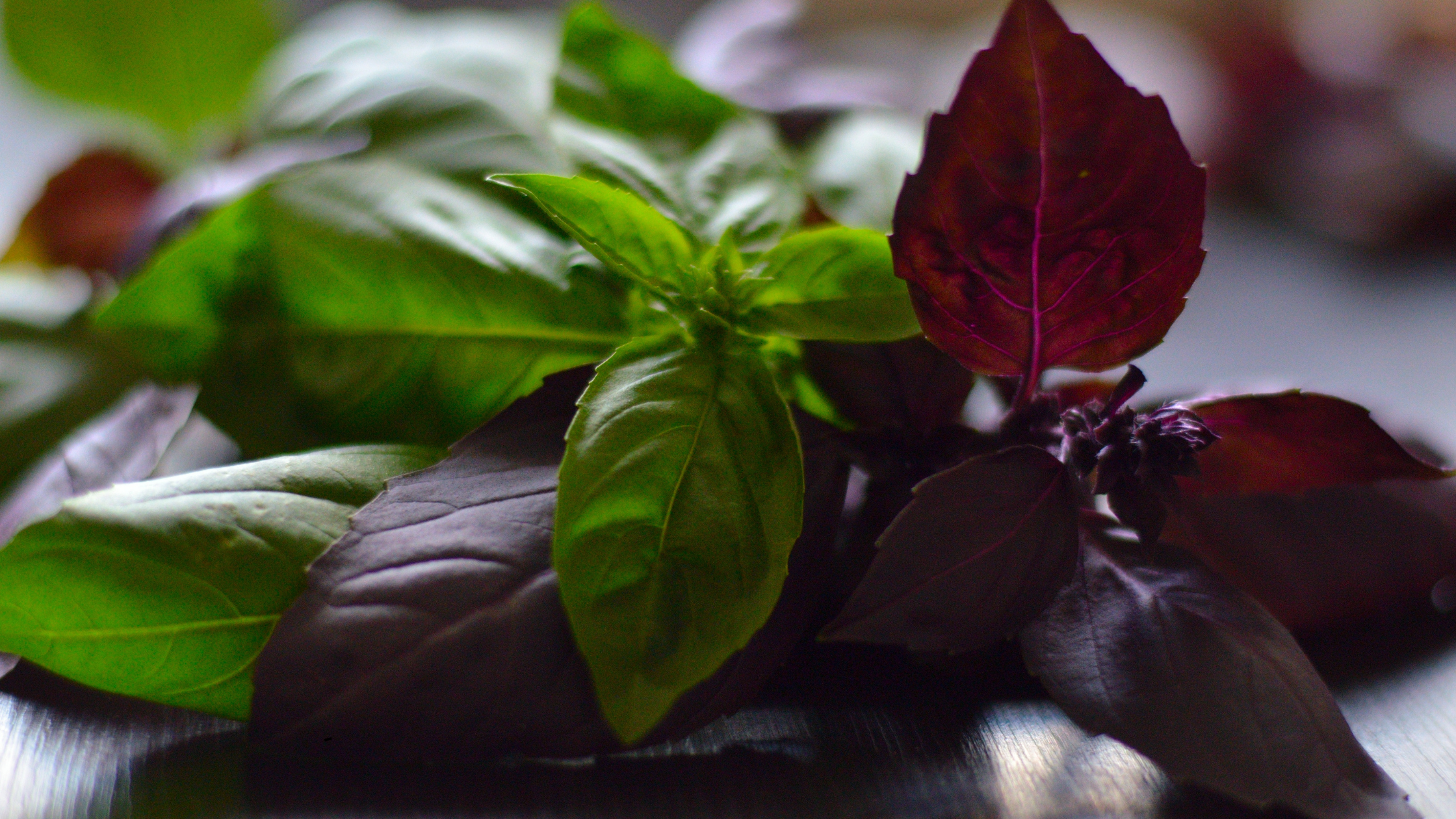the study of scent
Observation I: Red Leaf Basil
EDITOR’S NOTE
This month, The Edit introduces a new personal, ongoing exploration: The Study of Scent. It explores how natural materials and scent can shape our experience of space; not through products or decoration, but through careful observation. The focus is on authenticity, air quality, and the subtle influence of natural elements on how we inhabit and interact with our surroundings. Consideration is also given to the United Nations’ latest findings on indoor air quality, reinforcing the importance of non-toxic, natural materials in supporting healthier environments.
We began this with red leaf basil, including its deep red-purple flowers, it was laid to dry naturally on a white muslin cloth. Its scent is soft, herbal, and slightly sweet, and is enough to notice when you pause and breathe. In the home, it invited moments of reflection: people stopped, they smelled, they touched, and lingered. Maybe it was the colour, the scent, or the combination of both of these, either way, attention followed.
This first observation asks: how do natural materials, in their simplest forms, encourage presence? How do they shape the subtle qualities of a space that support well-being and awareness?
Observation I: Red Leaf Basil
The red leaf basil lays to dry near a window on a simple white muslin cloth. The flowers are a deep red-purple colouration, the leaves are full and textured. Light moves across them throughout the day. It’s a simple set-up, but it changes the room.
Through The Study of Scent, this personal, ongoing exploration looks at how natural materials influence things like air, mood, and attention. These small shifts; a pause, a breath, a moment of stillness, all speak to something larger here: how our environments can quietly guide how we feel and behave within them.
FINDINGS FROM THE HOME OBSERVATION
Introducing red leaf basil into a living space produced consistent, observable responses:
There was lots of interaction; people would pause to look, smell, and touch the leaves and flowers.
The deep red-purple flowers drew the eye and invited focus.
Moments of reflection naturally occurred; whether that was a deep inhale, a comment, or a measured gesture toward the plant.
These interactions indicate that natural scent and visual presence can create intentional pauses in our daily routines. The material itself doesn’t demand attention, but encourages engagement, a subtle but meaningful shift in behaviour and awareness.
PHYSIOLOGICAL INSIGHTS
Even brief engagement with natural materials have measurable effects. When individuals pause to observe or smell a plant we find that:
Breathing patterns tend to slow and deepen.
Heart rate may lower slightly, activating a parasympathetic “rest and restore” response.
Awareness of the immediate environment increases, fostering mindfulness and calm.
Red leaf basil, with its combination of vibrant foliage, striking flowers, and that gentle aroma, demonstrate how sensory cues can support well-being in a space. It reinforces the principle that design doesn’t always need to be visual alone, the presence of natural scent and texture can be as equally impactful.
GUIDING PRINCIPLES
The Study of Scent follows six guiding principles:
Natural Integrity — Observations use only safe, sustainable botanicals and materials that support clean indoor air.
Subtlety and Inclusivity — Materials are selected for their gentle qualities, avoiding anything that might trigger sensitivities.
Air Quality — The effect of each element on the indoor environment is considered carefully, consistent with WELL principles.
Observation Over Performance — Focus is on presence and influence, not strength or longevity.
Environmental Care — Materials are handled intentionally and respectfully, with minimal waste.
Human Experience — Observations prioritize how natural cues influence perception, behaviour, and well-being.
NEXT STEPS
Future observations will expand to other natural elements; these can include things like botanicals, woods, and subtle combinations of materials. The goal here is to understand how scent, texture, and colour interact with light and air to influence mood, attention, and the experience of a space.
Each of these new personal explorations will be documented carefully, building on prior insights, creating a thoughtful exploration of how natural materials can support presence and well-being in the environments we inhabit.
REFLECTION
Red leaf basil, in its simplest form, demonstrates the quiet power of nature in a space. Its leaves and flowers invite pause, reflection, and sensory engagement.
The Study of Scent is not about creating a product or a styled moment. It is about noticing, understanding, and respecting the subtle ways natural materials influence the people and the spaces around them.
I trust this first observation is only the beginning, it’s an invitation to look, breathe, and be present in the everyday environments we design and live in.
As always, we invite your input.
